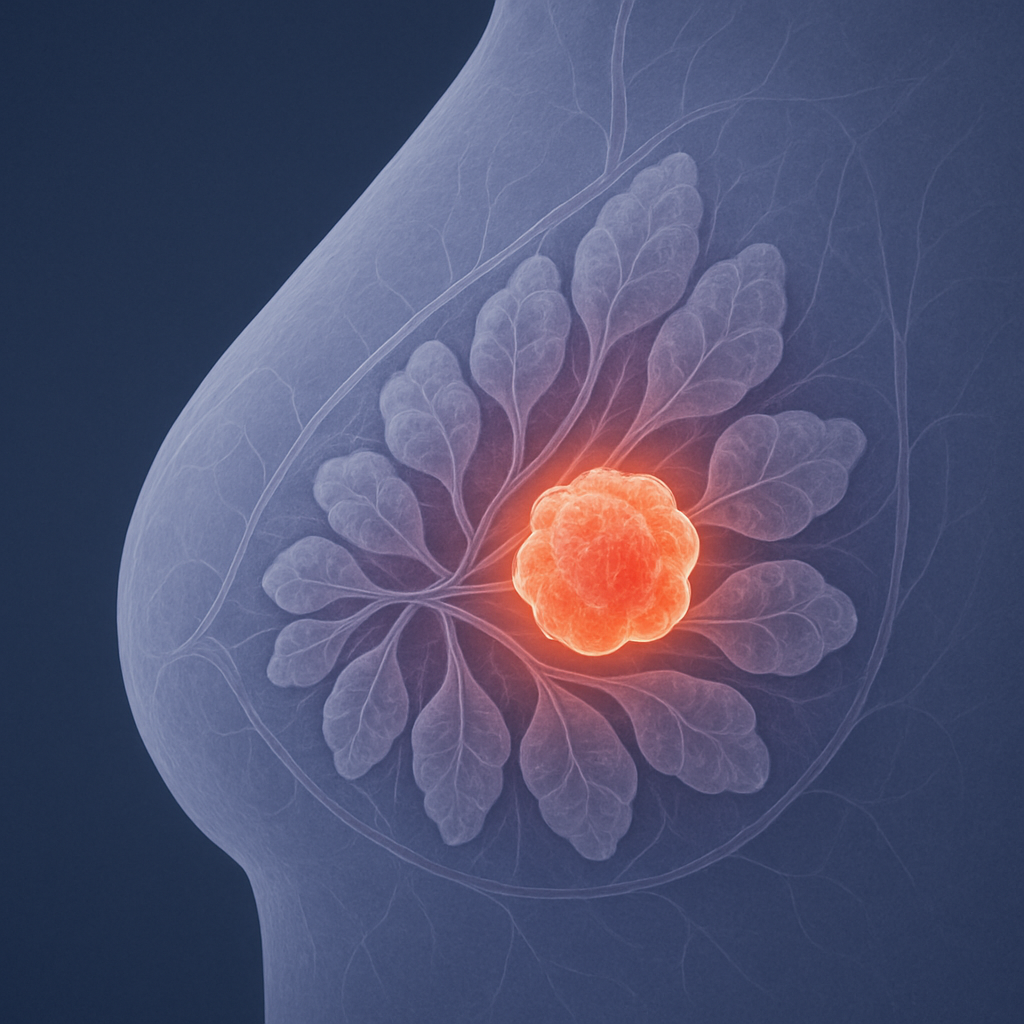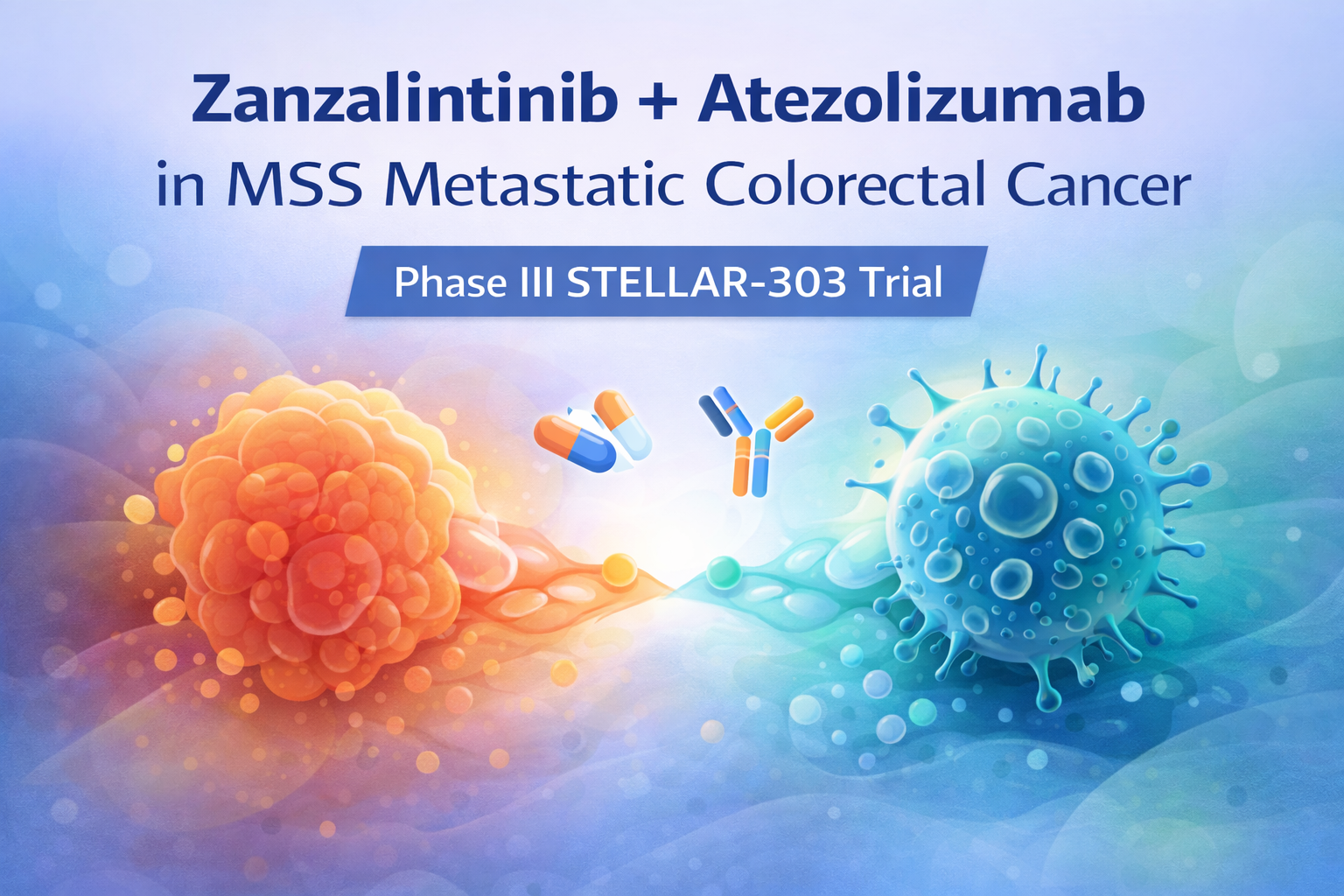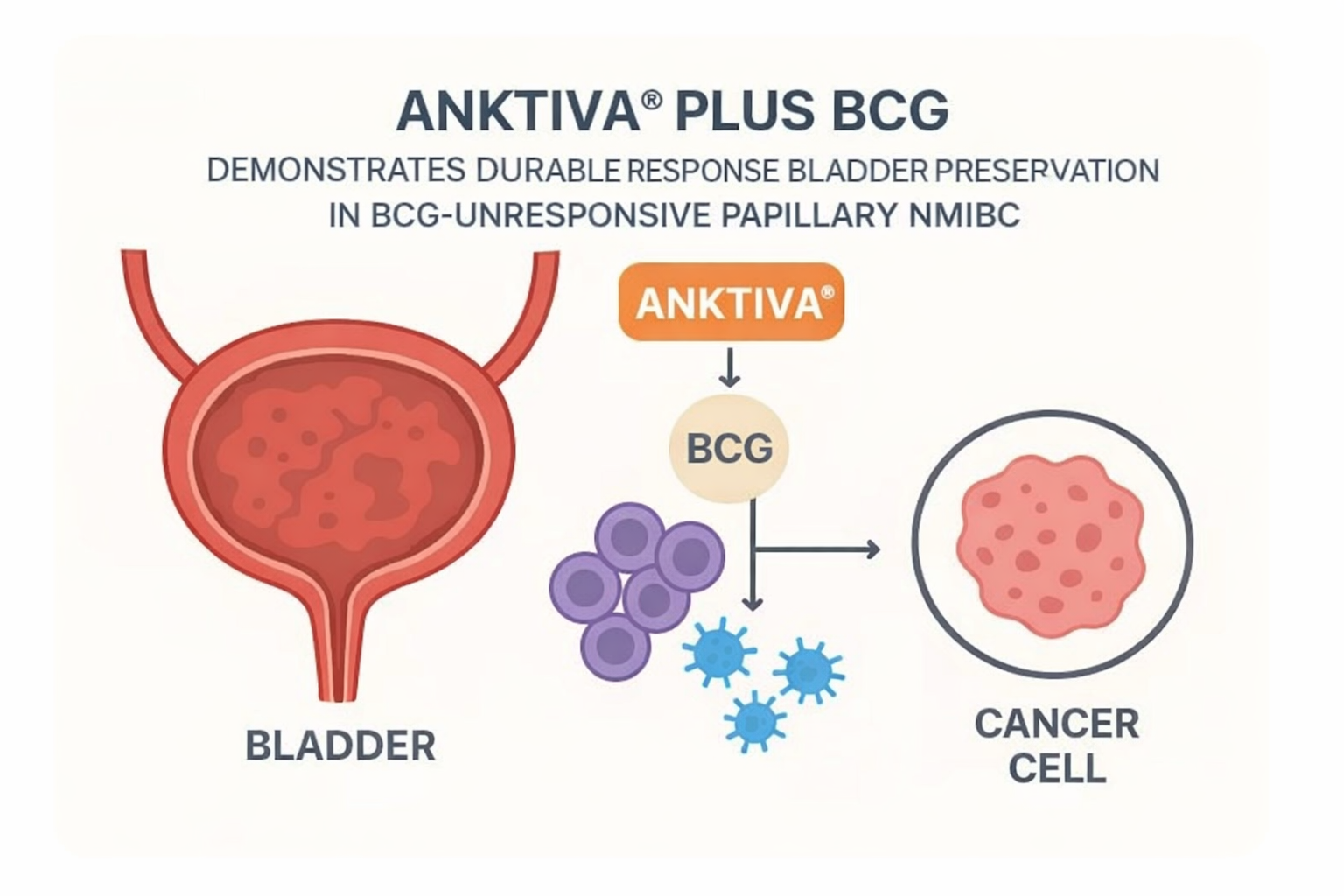

Palbociclib resistance in HR+/HER2- advanced breast cancer can be predicted by baseline ctDNA mutations in ESR1 and PIK3CA genes and amplifications in CCND1 and FGFR1. Patients with wild-type genes showed significantly longer progression-free survival, with undetectable ctDNA at cycle 2 predicting better outcomes regardless of endocrine therapy partner.

Study Design & Population
- Prospective real-world study (POLARIS) of palbociclib-treated patients
- 344 patients with HR+/HER2- advanced/metastatic breast cancer included in biomarker analysis
- Serial ctDNA sampling using Guardant360 platform (73 genes) at baseline, cycle 2 day 1, and end of treatment
- Median age 65 years, 84% White, 96% metastatic disease, 29% de novo metastatic
Key Findings
- 85% of patients had detectable gene alterations at baseline; most frequent mutations: PIK3CA (38.4%), TP53 (28.6%), ESR1 (15.5%)
- Baseline ESR1 mutations: median rwPFS 12.0 vs 22.3 months for wild-type (HR 0.42, 95% CI 0.28-0.61)
- Baseline PIK3CA mutations: median rwPFS 16.2 vs 23.3 months for wild-type (HR 0.60, 95% CI 0.44-0.81)
- CCND1 amplification: median rwPFS 13.1 vs 20.2 months for wild-type (HR 0.52, 95% CI 0.32-0.84)
- Undetectable ctDNA at C2D1: median rwPFS 33.1 vs 17.1 months vs detectable (HR 0.57, 95% CI 0.40-0.81)
- ESR1 mutations most frequently acquired at progression (12.5% gained vs 4.8% lost)
Clinical Implications
- Baseline ctDNA profiling may help stratify patients for palbociclib treatment response and guide treatment sequencing
- Early ctDNA monitoring at cycle 2 could identify patients with better prognosis and treatment response
- ESR1 mutation acquisition during treatment supports current ASCO guidelines for ESR1 testing at progression
- Results consistent across treatment partners (AI vs fulvestrant) and lines of therapy, suggesting broad applicability
Limitations
- Observational design with physician-determined progression assessments, not standardized RECIST criteria
- No control arm without palbociclib to isolate CDK4/6 inhibitor-specific effects from endocrine therapy effects
- ctDNA detection sensitivity may underestimate mutations at low tumor burden timepoints
- Small sample sizes in some subgroup analyses limit statistical power for definitive conclusions



